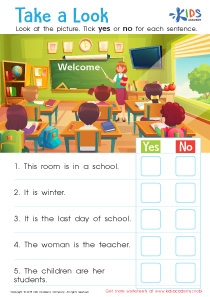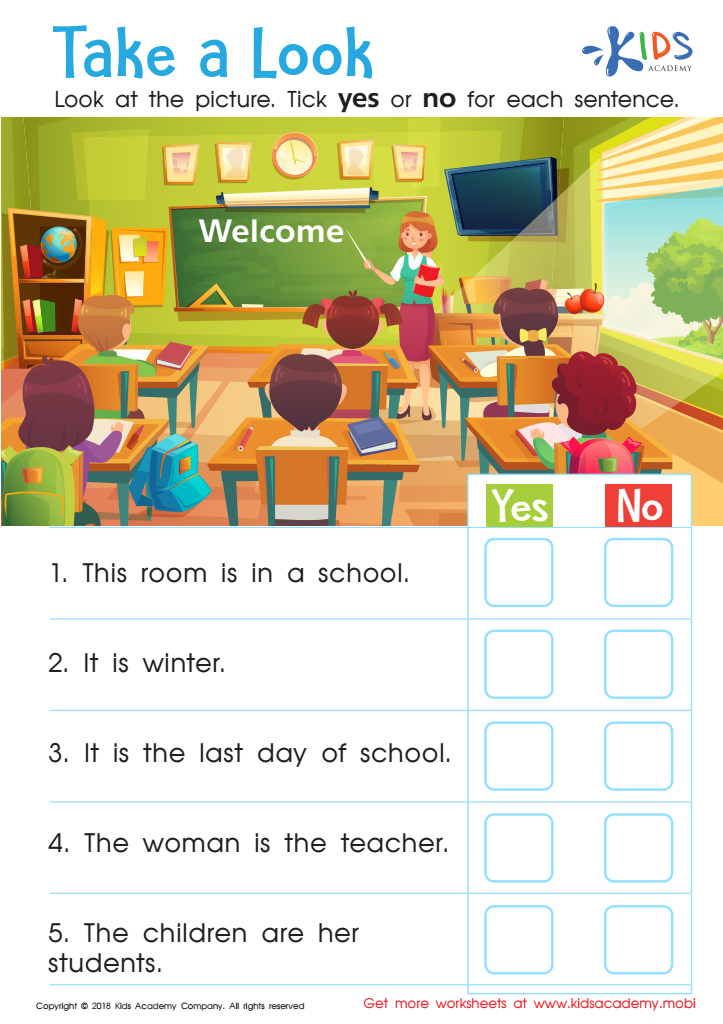Illustrations Used for Meaning - Lesson for Grade 2, Chapter - Key Ideas and Details/ Craft and Structure
In the lesson "Illustrations Used for Meaning," second-grade students will dive into the colorful and imaginative world of illustrations within literature. This lesson is a crucial part of the Reading Literature unit, focusing on Key Ideas and Details as well as Craft and Structure. Through engaging with the "Take a Look - Part 2 Worksheet," students will learn to interpret and understand how illustrations contribute to the narrative of a story. They will discover how pictures can provide context clues, enhance the mood, and emphasize themes or characters, making the text more relatable and meaningful.
Understanding the role of illustrations is important because it enhances students' comprehension and appreciation of literature. It helps them develop a deeper understanding of the story's message and encourages them to think critically about the relationship between text and visual elements. This skill is not only vital for academic success in reading and literature but also enriches their personal reading experiences. By learning to interpret illustrations, students become more observant readers, capable of appreciating the nuanced interplay between words and imagery, which is a foundational skill in literacy.

-
Activity 1 / Take a Look - Part 2 Worksheet
Train your child to be a keen observer, since paying attention to details can be critically important, especially for reading and writing! This colorful PDF worksheet tasks learners with observing a scene to take in all the details. After looking carefully for a few minutes, assist little learners in reading each sentence and checking the picture to see if it true. Finish the page by checking the «yes» or «no» box to answer whether what is stated is true or false.

